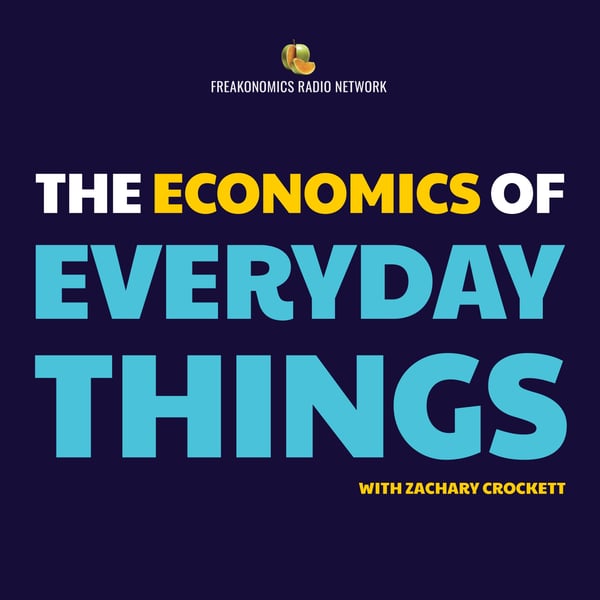Pistachios (Replay)
The Economics of Everyday Things
Freakonomics Network
4.8 • 1.2K Ratings
🗓️ 30 December 2024
⏱️ 16 minutes
🧾️ Download transcript
Summary
Transcript
Click on a timestamp to play from that location
| 0:00.0 | Growing up, Sawyer Clark did not understand the allure of pistachios. |
| 0:13.1 | My first memory of pistachio was watching my grandpa crack them and put the shells into a bowl, |
| 0:17.4 | and I couldn't imagine why someone was eating those weird green nuts with a shell on. |
| 0:20.7 | That was hard to get off. But Clark eventually had a change of heart. Today, he helps run a |
| 0:27.2 | pistachio farm. He spends his days thinking about nitrogen levels and soil and calculating nut yields. |
| 0:34.5 | In the fall, come, you know, late August, but usually more September, you keep an eye on the |
| 0:40.0 | crop, and when the nuts start splitting and the holes start peeling back, you shake the trees, |
| 0:45.5 | cuts the nuts, bring them to a processor, and get them to consumers. There's a reason for his |
| 0:49.9 | change of heart. A few decades ago, there wasn't much of a commercial market for pistachios in the |
| 0:55.7 | United States. They could only be found at farmers markets or in the bulk bins at health food |
| 1:00.9 | stores. These days, it's a different story. Pistachios are touted by celebrities in Super Bowl ads. |
| 1:08.7 | They're sold in huge display cases at major grocery chains. |
| 1:12.6 | And they're now the fastest growing nut product in the country. |
| 1:20.1 | In the 1990s, the USDA says the U.S. produced about 250 million pounds of pistachios. |
| 1:27.1 | This year, the estimate is going to come in |
| 1:29.1 | bigger than 1.5 billion pounds. So that's more than 6x in 30 years, just within the U.S. |
| 1:36.6 | For the Freakonomics Radio Network, this is the economics of everyday things. I'm Zachary |
| 1:41.6 | Crockett. Today, pistachios. Pistachios have been cultivated and consumed for thousands of years in other parts of the world, especially Turkey and Iran. |
| 1:53.9 | You can actually find news reports where the two countries talk about who has the older tree. There are pistachios that still produce in Iran that are |
| 2:03.3 | estimated to be 1,500 years old. Pistachios first started showing up in the U.S. in the late 19th century. |
| 2:10.1 | They were sold in vending machines, a dozen for a nickel. Most of these nuts came from Iran, |
| 2:16.1 | which dominated the global pistachio market for many decades. |
... |
Please login to see the full transcript.
Disclaimer: The podcast and artwork embedded on this page are from Freakonomics Network, and are the property of its owner and not affiliated with or endorsed by Tapesearch.
Generated transcripts are the property of Freakonomics Network and are distributed freely under the Fair Use doctrine. Transcripts generated by Tapesearch are not guaranteed to be accurate.
Copyright © Tapesearch 2025.

